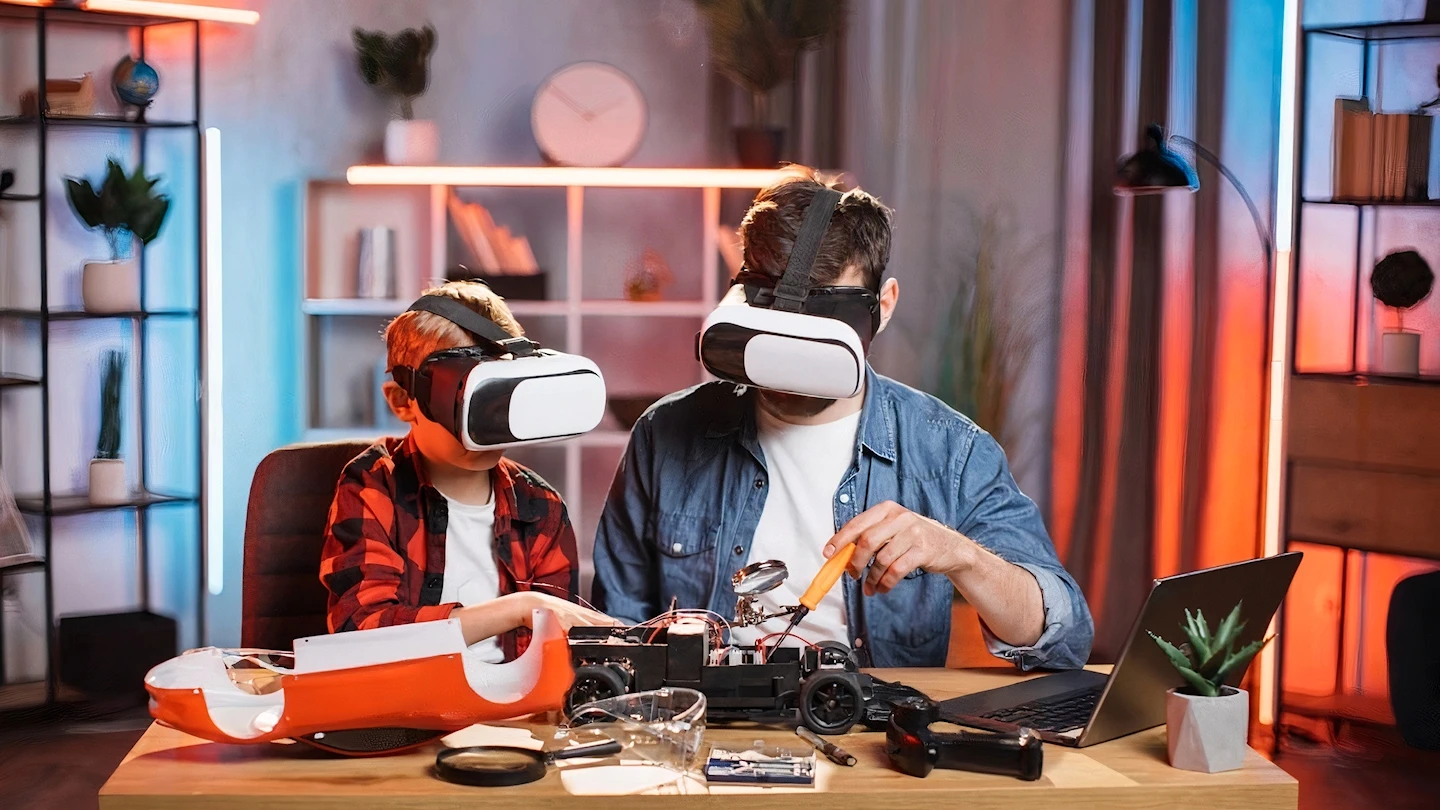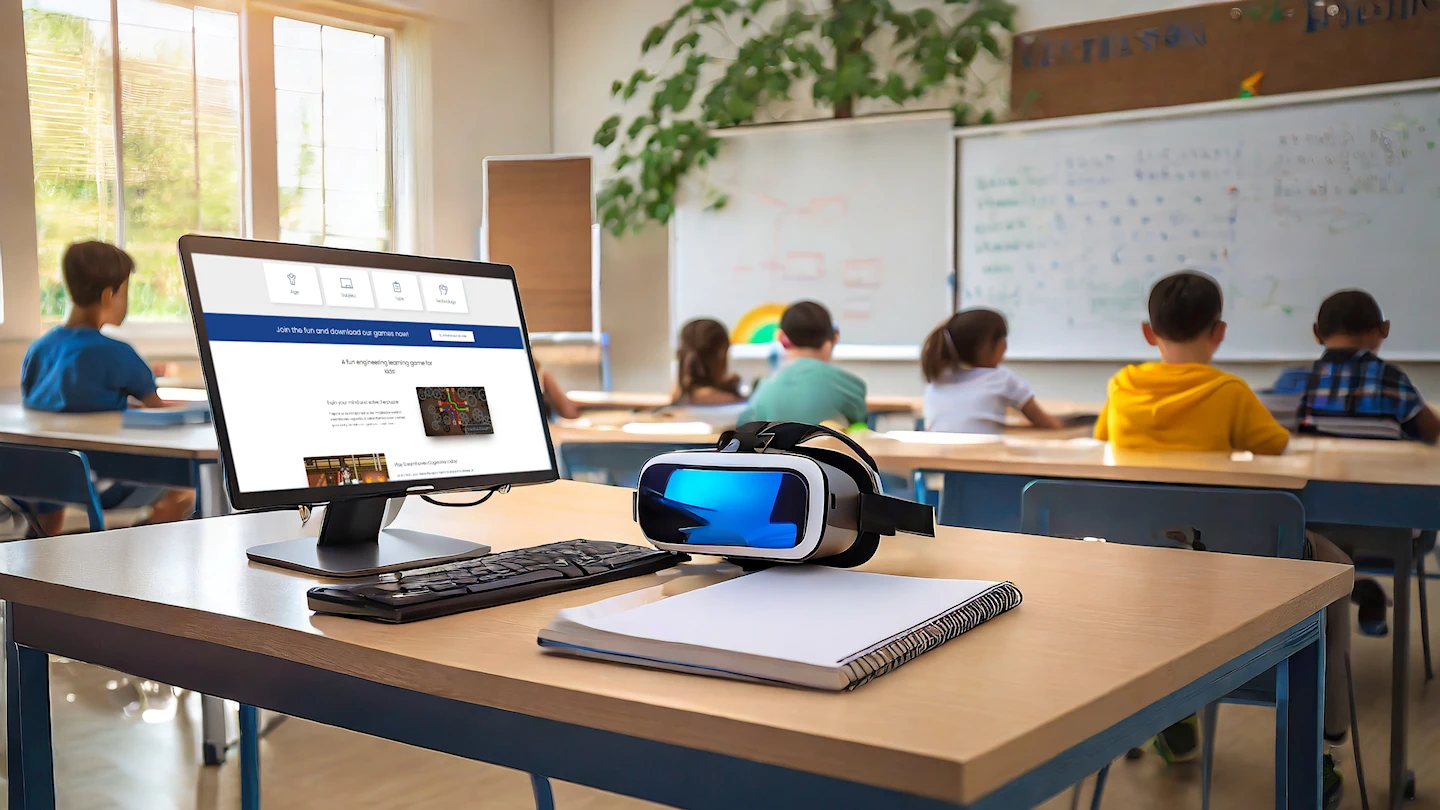Everyone learns differently. Psychologist Neil Fleming suggests that most children and adults tend to fall into four basic learning styles: visual, auditory, reading/writing, and kinesthetic. We process and understand information through pictures, diagrams, spoken words, written text, or movement and demonstration.
Schools usually accommodate auditory learning styles well through lectures and reading/writing style learners through textbooks and written assignments. However, kinesthetic and very visual learners can get left out. One of our teammates remembers her seventh-grade teacher apologizing to a kinesthetic learner boy for the fact that she had to teach in a way that wasn’t the best way for him to learn, but asking him to be patient with her for the sake of the rest of the class.
Emerging virtual reality (VR) and augmented reality (AR) tools offer the promise of education that will work better for visual and kinesthetic learners. Those who learn visually can observe objects at all angles in a 3-D simulation and watch processes in action, such as cell division or photosynthesis. And kinesthetic learners can finally encounter an environment supportive of their need to learn by moving and doing.
The Benefits of VR and AR for Visual Learners
Visual learners prefer to see information rather than hear it or read it. They can benefit from VR and AR tools that allow them to:
- Explore 3-D models of objects, such as planets, molecules, or human anatomy.
- Interact with simulations of natural phenomena, such as volcanoes, earthquakes, or weather patterns.
- Visualize abstract concepts, such as fractions, geometry, or algebra.
- Create their own digital art, designs, or animations.
The Benefits of VR and AR for Kinesthetic Learners
Kinesthetic learners prefer to learn by doing rather than watching or listening. They can benefit from VR and AR tools that allow them to:
- Perform hands-on experiments in a virtual lab.
- Manipulate physical objects with haptic feedback.
- Practice skills such as sports, music, or languages.
- Engage in immersive games or scenarios that require physical movement.
The Future of VR and AR in Education
According to a 2019 blog from MIT’s Media Lab, “Due to its immersive nature and body-tracking capabilities, VR can allow learners to do kinesthetic activities in an environment that is able to track and understand their movements, provide real-time feedback, and engage them in activities within novel contexts that strongly relate to their physical actions.”
Some students can read instructions or listen to a lecture all day but never really master a task until they can physically do it themselves. Lab experiments and physical tools for teaching young children arithmetic attempt to address this need, but VR and AR can take it to the next level.
VR and AR have the potential to revolutionize education by catering to different learning styles and providing personalized and engaging experiences for students. As these technologies become more accessible and affordable, we can expect to see more applications of VR and AR in classrooms and beyond.
How to Use VR and AR in Education
If you are interested in using VR and AR tools to enhance learning for visual and kinesthetic learners, here are some tips and resources to get you started:
- Choose a suitable device and platform for your needs. Different types of VR and AR devices exist, such as headsets, glasses, smartphones, or tablets. Some devices require a computer or console connection, while others are standalone. Some platforms, such as Google Expeditions or Microsoft HoloLens, offer ready-made educational content and apps, while others, such as Oculus Quest or Samsung Gear VR, allow you to create your own content or download from third-party sources.
- Consider the age and level of your students. VR and AR can be used for students of all ages and levels, but some devices and content may be more suitable for certain groups than others. For example, younger students may need more guidance and supervision when using VR and AR, while older students may be more independent and creative. Some content may be too complex or too simple for some students, so you should always check the difficulty and relevance of the content before using it.
- Integrate VR and AR with other learning methods. VR and AR are not meant to replace traditional learning methods but to complement them. You should use VR and AR to enhance and enrich your existing curriculum and activities, not as a substitute for them. For example, you can use VR and AR to introduce a new topic, reinforce a concept, provide feedback, assess learning outcomes, or motivate and engage students.
- Evaluate the effectiveness of VR and AR. As with any learning tool, you should monitor and evaluate the impact of VR and AR on your students’ learning and performance. You can use various methods, such as surveys, quizzes, observations, or interviews, to collect student feedback and measure their progress. You can also compare the results of using VR and AR with other learning methods or with previous results. You should use this data to improve your VR and AR practices and to identify the best ways to use VR and AR for your students.
Examples of VR and AR in Education
To give you some inspiration, here are some examples of how VR and AR are being used in education:
- History and Geography: Students can travel back in time and visit historical sites, such as ancient Rome, the pyramids, or the Colosseum, or explore different cultures and places, such as China, India, or Antarctica. They can also interact with historical figures, such as Abraham Lincoln, Martin Luther King Jr., or Gandhi, and learn about their lives and achievements.
- Science and Math: Students can conduct experiments and observe phenomena that are otherwise difficult or impossible to replicate in a real classroom, such as chemical reactions, gravity, or electricity. They can also manipulate and visualize mathematical concepts, such as shapes, angles, or equations, and see how they relate to real-world problems.
- Art and Music: Students can create their own art and music using VR and AR tools, such as Tilt Brush, Quill, or GarageBand. They can also learn from famous artists and musicians, such as Van Gogh, Picasso, or Mozart, and see their works and techniques in 3-D.
- Language and Literature: Students can practice their language skills by immersing themselves in a virtual environment where they can speak and listen to native speakers, such as Rosetta Stone or Mondly. They can also experience literary works in a new way by entering the worlds of their favorite books and characters, such as Harry Potter, Alice in Wonderland, or The Lion King.
Conclusion
VR and AR are powerful tools that can enhance learning for visual and kinesthetic learners. They can provide immersive and interactive experiences stimulating curiosity, creativity, and engagement. They can also cater to different learning styles and preferences and offer personalized and adaptive feedback. VR and AR can transform education by making learning more fun, meaningful, and effective.



